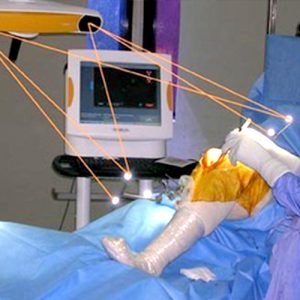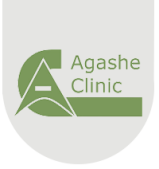Computer Assisted Surgery
As a result, it should come as no surprise that computers will aid doctors, particularly in procedures requiring accuracy. Extensive research over the previous decade has resulted in the creation of the ‘Navigation’ system for application in a variety of medical domains, including joint replacement surgery. Imagine being stranded in the middle of the desert with only a satellite phone to call for help. With the aid of your satellite phone and the global positioning system, you may communicate and precisely evaluate your position on the planet Earth (GPS). GPS works on the principle of tracking the location of the transmitter that communicates with the satellites. Satellites triangulate the signal source in order to establish its location. GPS is utilized in automobiles in most major cities across the world to navigate around congested highways.

Today, the same principle is enabling surgeons in a variety of professions to enhance results and minimise the risk of problems caused by technical inadequacies. The application of navigation technology in the field of knee and hip replacement surgery has improved the already excellent outcomes of this procedure.
Mechanical engineering and medical expertise are used in joint replacement surgery. The most crucial part of the knee and hip joint replacement surgery is restoring the leg’s mechanical alignment. During surgery, the surgeon analyses the angle of deformity, the wear of the joint surfaces, the size of damaged or diseased bones, and the state of the ligaments that provide joint stability. Until recently, the surgeon had to perform everything manually, with human error occasionally seeping in. If there is an imbalance in the positioning of the prosthetic joint components, they will wear out faster and fail sooner. Today, a well-done complete knee replacement with a high-quality prosthesis should last at least 12 to 15 years. The accuracy with which prosthetics are placed is likely to improve the results even further. Until this technology was available, surgeons had to rely on their psychomotor abilities, mechanical equipment, and their own judgement to insert prosthetic joint components.
Because it directs the surgeon through all of the procedures of surgery and even points out faults before they happen, the computer-guided method is also known as ‘Navigation.’ It functions in the same way as a satellite does, detecting signals from automobiles, boats, and other vehicles fitted with tracking systems. As the surgeon moves a device into the patient’s joint, the infrared camera determines its position, much like a GPS satellite, and then sends the information to a computer in the operating room. The computer then displays the instrument’s direction and position.
The computer directs the route of the instruments so that the part is installed in the best possible place. It also aids in the adjustment of ligament tension, which is critical for achieving a stable joint with a wide range of motion. It consists of a computer console, a touch screen display, and a handful of infrared cameras that track the leg’s and components’ positions. Dedicated tools with reflective trackers are used to register anatomical landmarks and provide data to the computer during surgery. The computer creates a bone model that helps the surgeon through practically every stage of the procedure. The steps’ precision has been enhanced to 0.5 degrees and one millimetre.
Aside from enhancing the precision of bone cuts, the computer also aids in the restoration of soft tissue balance, which is essential for achieving the desired outcomes.
The application of such technology provides a number of additional advantages. The surgical cut may be kept small with a smaller incision and restricted soft tissue dissection since the computer controls the exact bone cuts. Today, the majority of advancements in the area of joint replacement surgery are in what is known as “minimally invasive surgery” (MIS). Knee and hip replacement in nonobese people may now be done via a 10- to 12-centimeter incision. Techniques have emerged that reduce or totally eliminate muscle injury, allowing patients to recover faster after surgery. Patients can stand and walk as early as the third day following surgery and can be released from the hospital as soon as the fifth day. The minimally invasive operation is made even easier with computer-assisted navigation.
Agashe Clinic
- Research Award by Bone and Joint Decade – 2004
- Esteemed Fellowship Offered By The AO Group From Switzerland – 2008
- Fellowship With Prof. Willium Peterson From Germany In Sports Medicine – 2007
Address
- Office no 206, Siddharth Towers Building no 1 Near Karishma society, Kothrud, Pune, Maharashtra 411029
- 086006 53737
- [email protected]



